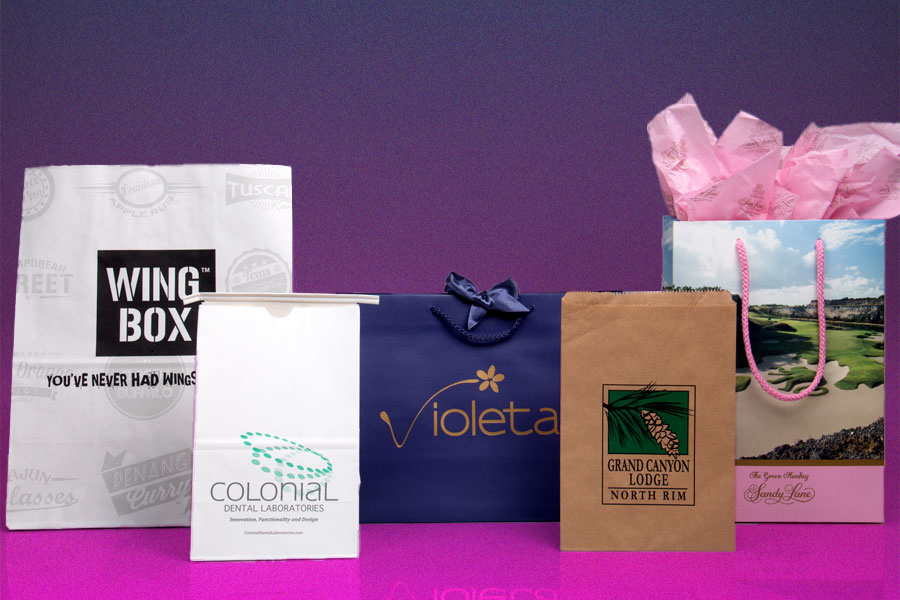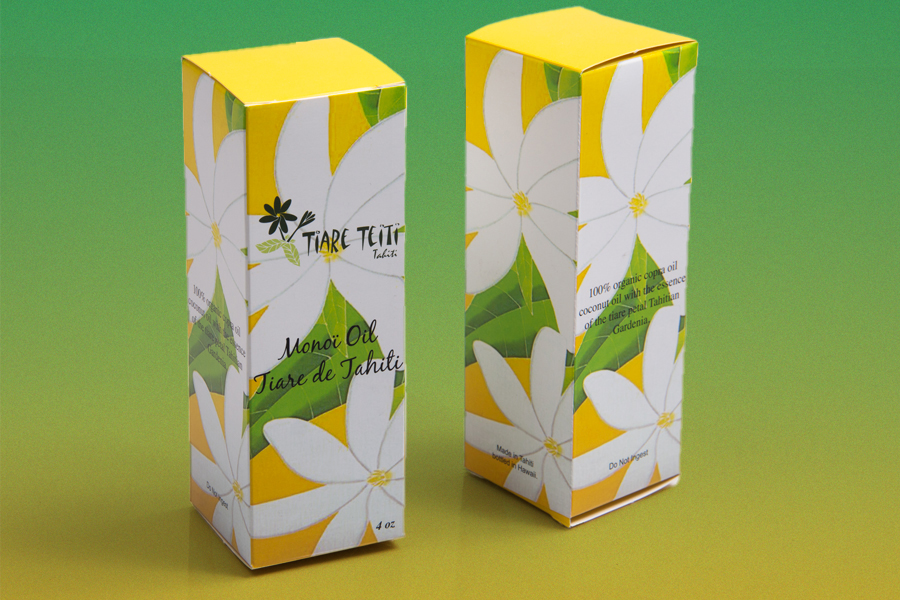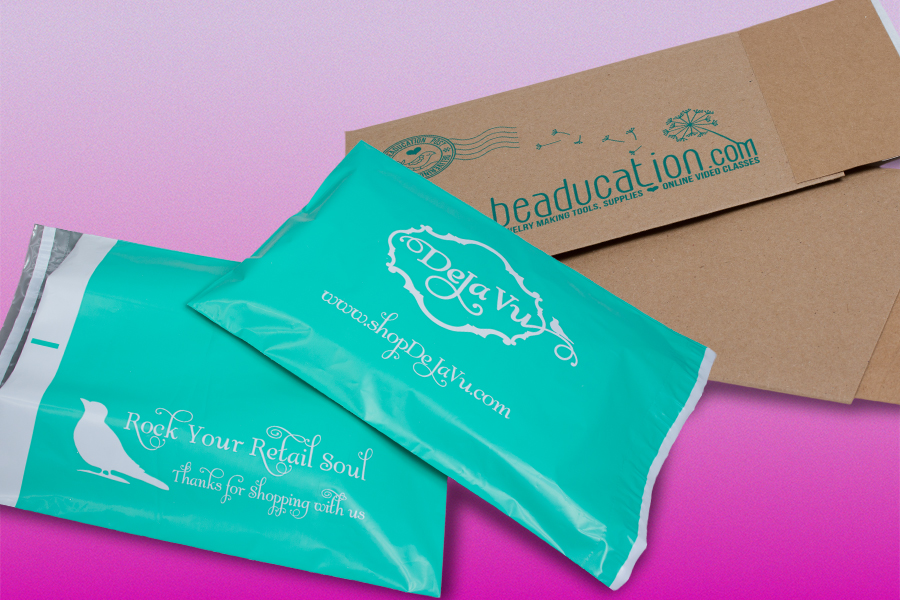PACKAGING GLOSSARY
You've come to the right place. Answers to some of the most common questions about custom packaging are below. If you don't find your answer here please contact us to talk with one of our knowledgeable packaging consultants.
Every custom packaging project is unique, and so is our pricing.
Request a quote now and our packaging specialists will start working on options for your custom project!
PRINTING METHODS GLOSSARY
Embossing and Debossing: The process of creating a raised or lowered graphic image on the product.
Flexographic Printing: The process of rotary printing utilizing flexible rubber plates attached to rotating cylinders that apply ink to the product.
Gravure Printing: The process of ink printing utilizing etched, metal cylinders.
Hot Stamping: The use of foils to print bags, boxes and other products which are applied with metal plates and heat.
Ink Coverage: Percentage of the surface of the product that is covered with printing.
Matte, Gloss or Soft Touch Laminations: The process of bonding a clear plastic film over the printed material for strength and appearance. A great enhancement to any printing.
Overruns and Underruns: Overruns and underruns are a percentage of the amount of product that the job could end up over or under the initial quantity ordered.
PMS Ink Colors: PMS (Pantone Matching System) is the universal color chart used in the fine print industry. GCMI inks are typically used in the corrugated box printing industry.
Post Printing: Printing on products that have already been made.
Printing and Converting: Pre-printing rolls or sheets of material and then converting them into the final product.
Process Printing: Typically used to reproduce photographic images and multi-color prints using only the four CMYK inks (cyan, magenta, yellow and black).
Registration: This refers to the position and possible movement of one color or multiple colors of a piece of artwork. If an artwork layout has 2 colors and the 2 colors touch each other or overlay each other somewhere in the design, they need to closely register even though they are printed at different times. Tight registration refers to extremely close tolerances of artwork registration.
Spot Printing: Printing single colors indicated in the artwork (see Printing Processes for full description).
Trapping: Because of movement of the printing material going through the printing press, when 2 or more colors meet, there needs to be a small overlap area to maintain the desired printing result. Or, if you want to keep different colors from touching, they need to be separated by enough space to keep them apart because of the same issue of movement.
UV Coatings: Ultra violet treatment that gives the finished product an extremely high gloss appearance and a more durable finish.
PRINTING MATERIALS GLOSSARY
Board Caliper: Thickness of paperboard box materials.
HDPE: High density polyethylene used for plastic bags.
LDPE: Low density polyethylene used for plastic bags.
LLDPE: Linear low density polyethylene used for plastic bags.
MG, MF and Coated Papers: Types of finishes and paper compositions typically used for printed paper bags.
PP: Polypropylene plastic. Used for plastic bags, drink cups, etc.
SBS Board: Solid bleached sulfite paperboard usually used for boxes and tags.
GENERAL PACKAGING GLOSSARY
Delivery or Lead Times: The amount of time for an order to be produced after any artwork layout or other proofing approvals are completed.
Domestic Production: Products produced in the USA.
Imported Production: Products produced overseas, typically in Asia, but we also import from Central and South America.
GREEN PACKAGING GLOSSARY
ASTM D6400 - Composting Standard: A standardized test for compostable products that assesses their ability to degrade in a composting facility at the same rate as yard trimmings or food waste. According to the standard, the compostable material should fully biodegrade in 180 days in a "commercial" organic composting facility.
Biodegradable: The ability to completely break down, safely and relatively quickly, into raw materials of nature from the action of natural, biological microorganisms such as fungi, algae, bacteria, etc., and then disappear into the environment.
Composting - Commercial (Organic): A mixture of degradable garbage, trash and soil, in which bacteria break down the mixture into a soil conditioner (not a fertilizer). It has high organic content but low in nitrogen. Materials specifically designed to be commercially compostable must be sent to a commercial organic composting facility (organic waste center) to be exposed to constant heat (180 degrees or more), pressure, and or microbial environments enriched with microorganisms like bacteria to biodegrade. According to the composting standard, ASTM D6400, the material should fully degrade within 180 days. All PLA plastic bags and containers need to be commercially composted. They will not degrade in a landfill or home and yard waste composting.There are only about 150 commercial composting facilities in the US. And not all of these sites accept PLA products.
Composting - Yard Waste: Yard trimmings like grass and leaves are sent to yard waste compost centers throughout the country. There are approximately 3,000 yard waste composting facilities in the United States. These centers are different from commercial (organic) composting centers. Yard waste compost centers cannot accept PLA packaging. PLA materials must be exclusively composted in commercial organic composting centers. Since most consumers are not aware that PLA compostable packaging (trays, bags, spoons, etc.) are not degradable by most recognized curbside yard waste compost services, this type of packaging often ends up in landfills - defeating the purpose of their existence and high cost of production. (PLA does not degrade in landfills.) Note: In the United States, there are an estimated 3,000 yard waste composting facilities, but only approximately 150 commercial organic composting centers. Since permits for commercial composting facilities are very difficult to obtain by municipalities, their existence in most neighborhoods are prohibited and undesired, limiting their accessibility. As a result, most PLA materials end up in the landfills.
Degradability: Ability of materials to break down and undergo a significant change to their chemical structure under specific environmental conditions by bacterial (biodegradable) or ultraviolet (photodegradable) action.
Greenhouse Gasses: O2, Methane, N2O, Fluorinated Gas emitted through human activities.
PLA (Polylactic Acid) Material: PLA is often made by using corn, sugar beets, wheat and other starch-rich products to make a form of synthetic materials like polyethylene. Polylactic acid exhibits similar properties to petroleum-based plastic and are often confused for plastics.
Post-Consumer Recycled Material - (PCR): This is any material that was used and discarded by a consumer or business and captured before going to a landfill. This material is then recycled for use into a new product. It's what you take to the recycling center or put into a recycling program container for pickup. A product label might indicate how much post-consumer recycled content the product contains. Usually it is stated by a percentage. Paper, corrugated boxes, plastic, steel, glass and rubber are among post-consumer discards that get recycled into such things as bags, boxes, insulation, park benches, milk bottles, etc.
Post-Industrial Recycled Material - (PIR): This is excess, scrap or trim material that has been recovered by a factory during and after the manufacturing process but did not enter in to the consumer stream.
Recycled: Products that are made from items recovered from the waste system, reprocessed into new products and offered to consumers and businesses as a new item. Recycled products can be made from either PCR or PIR material. Some products contain both PCR and PIR.
Recyclable: This defines products and materials that can be collected from the waste stream, recycled into new products, or reused.
Sustainable Packaging: Packaging that maximizes the use of renewable or recycled source materials.
HOW TO ORDER

Select the style, dimensions, and materials you want based on your packaging and branding needs. Then, work with our packaging specialists and graphics team to create the perfect design for your brand.

After your design’s given a twice-over by our quality assurance process, we’ll move forward with production. All you have to do is sit back and wait for delivery while we work our packaging magic.

Impress everyone with custom packaging that's uniquely crafted by us to perfectly showcase your product, tie together your brand visuals, and leave a lasting impression on your clients or customers.
A quick word on our packaging specialists, by the way – since 1955, we’ve prided ourselves on providing white glove service to thousands of brands looking for custom packaging solutions. No matter how complex the request, our packaging specialists are here to act as expert guides through your entire project.
START YOUR CUSTOM ORDER TODAY:
Use this form to get in touch with one of our packaging specialists. They'll listen to your packaging needs, and help you design a box to perfectly suit your product.




